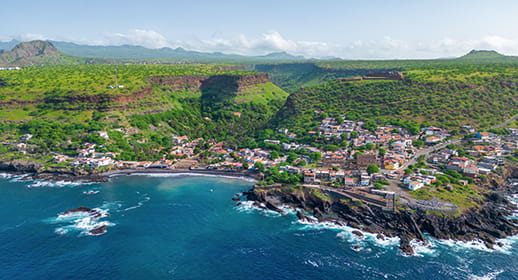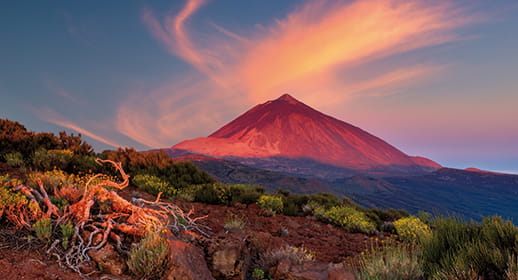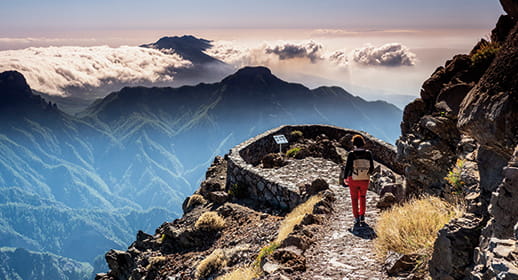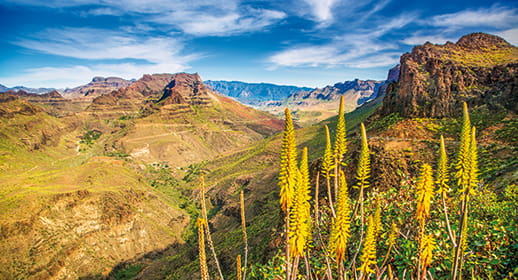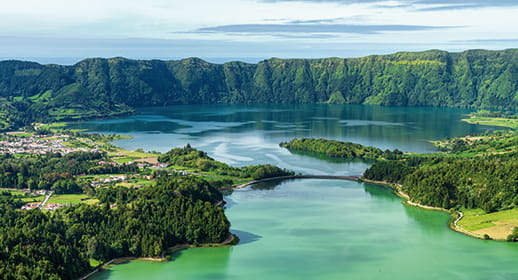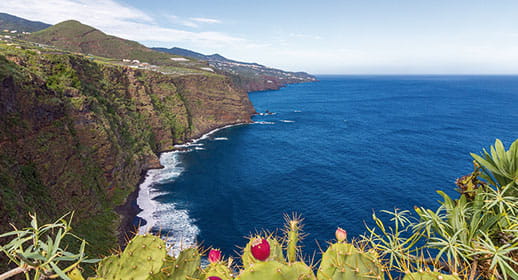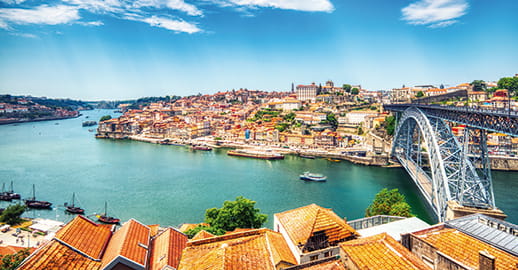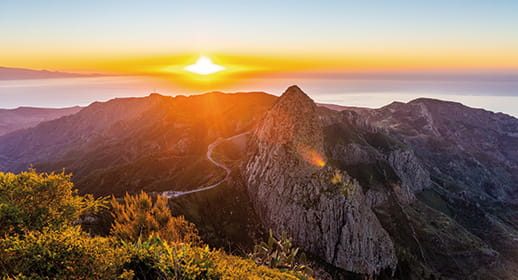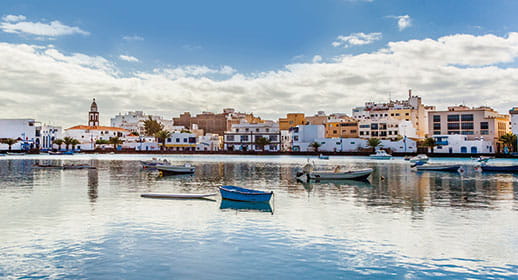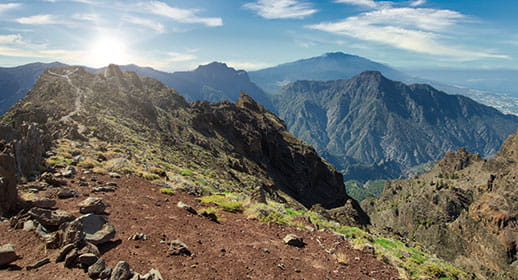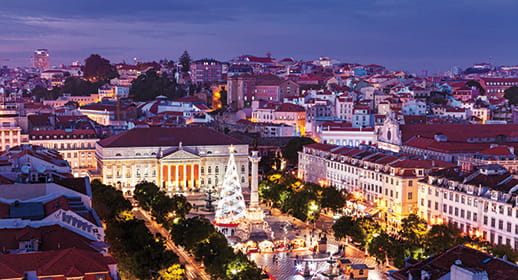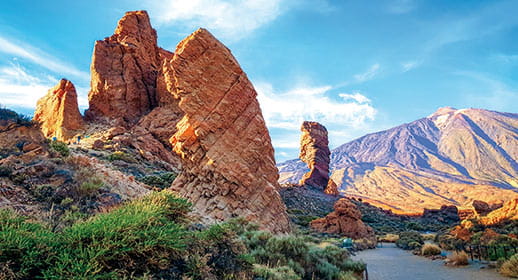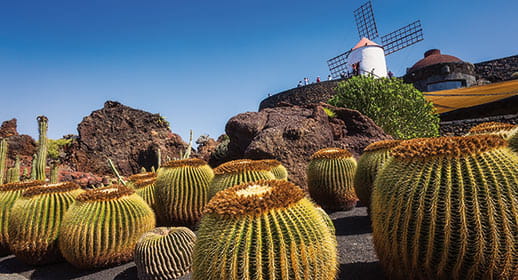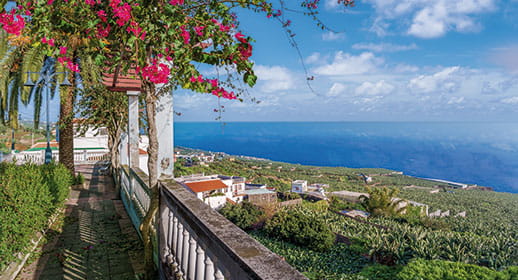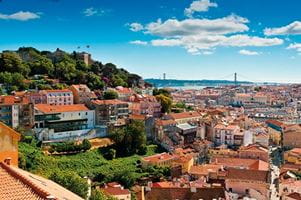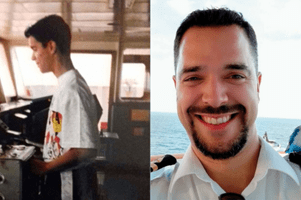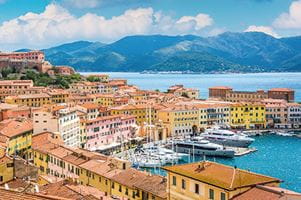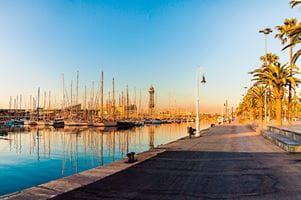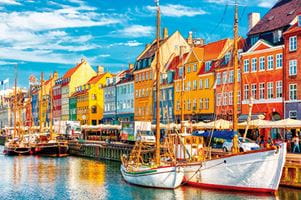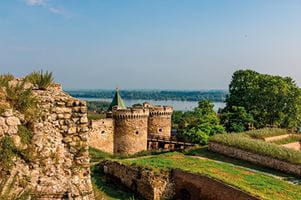Destinations
Best things to do in Fuerteventura
Take a small-ship luxury cruise to the Canary Islands with Saga, and one of your many ports of call will be fascinating Fuerteventura. With around 3,000 hours of sunshine a year and ‘the biggest and best beaches in the Canaries’, it certainly is the place to be if you’re looking for some winter sun.
With Saga’s no-fly Fuerteventura cruises, you don’t just get away from the cold, grey days – you avoid airport hassles and cancellations too. From the minute your chauffeur picks you up at the door, it’s laid-back, effortless enjoyment all the way.
You’ll enjoy first-class service in the company of like-minded travellers (our cruises are exclusively for people over 50).
You’ll have your own luxuriously-appointed cabin with its own private balcony.
And you’ll visit the most beautiful islands in the Canaries (and a couple of bonus destinations, too), with lots of interesting excursions to choose from plus the chance to explore on your own.
What to do in Fuerteventura

Fuerteventura is the oldest of the Canary Islands, and many would say the calmest: it hasn’t had a volcanic eruption in millennia. So time and the weather have moulded it into a relaxed, gently-curving landscape of vast plains and low, rounded mountains.
There’s only one ‘high’ mountain. Tindaya’s 400 metres of ochre stone rise up dramatically from the plain. Perhaps inevitably, it was seen as sacred by the island’s first inhabitants. You can still see more than 300 of their carvings, in the shape of feet. Interestingly, scientists have found similarities with those found in the Berber areas of North Africa.
Today, Fuerteventura is a popular holiday destination, loved for its gleaming white-sand beaches and excellent climate – you can expect glorious sunshine, cooled by gentle breezes.
With almost 150km of idyllic sandy shores, including the rolling sand dunes at Parque Natural de Corralejo, the island is particularly famous for world-class wind and kite-surfing, though every kind of water sport is available.
Fuerteventura was one of the first islands to be conquered by Europeans, so as well as its natural assets, there are fascinating traces of history to be discovered as you explore.
Things to do in Puerto del Rosario

Puerto Del Rosario is Fuerteventura’s capital and its largest town. It was previously known as Puerto de Cabras (Goat’s Port) until 1956, when it was decided that this was a little unflattering: the new name means Port of Our Lady of the Rosary.
However, the town hasn’t forgotten its cabras – probably wise, on an island where it’s still said that there are more goats than people. Puerto del Rosario is also known as the City of Sculptures, and there are more than 150 of them displayed all around the town. A surprisingly large number of them are of goats. And now you know why!
Things to do at Fuerteventura Cruise Port
Walking up from the sheltered harbour, you’ll see Our Lady of the Rosary church, built out of black lava stone with whitewashed walls. Inside, it is quietly minimalistic apart from the impressive altar. The ‘Virgin del Rosario’ is the patron saint of the town, celebrated on the 7th October every year during the Fiesta de Nuestra Señora del Rosario.
Meet Unamuno - intellectual-in-exile
One of Fuerteventura’s most famous residents was Miguel de Unamuno, a Basque philosopher and writer who was exiled from mainland Spain. Despite the fact that he only lived on the island for 6 months, the locals took him to their hearts and you can visit a museum right in the town centre that’s dedicated to his life. (There’s also a rumour that Unamuno was one of the island’s first nudists but we understand that the museum doesn’t cover that aspect of his life).
You can find the Miguel de Unamuno Museum at Calle Virgen del Rosario 11.
Destination: Art
The Casa de la Cultura, next to the Island Auditorium, has well-regarded exhibitions of paintings, sculptures and photographic studies. (Calle Ramiro de Maeztu, 2)
The Centro de Art Juan Ismael is named after the Majorero modernist painter who, until his death in 1981, was a leading exponent both of surrealist art and avant-garde poetry. The museum also shows artworks and photography from other contemporary artists, both from the Canary Islands and the peninsula.
Although the building is unremarkable from the outside, if you like architecture, you’ll be pleasantly surprised by its interior. Don’t miss the panoramic view over the port from its first-floor balcony. There’s also a shop specialising in authentic traditional Majorera crafts, each with a seal of Government authentication. (Calle Almte. Lallemand, 30).
Stroll along the Marina…
Here’s a great spot for a leisurely pre- or post- lunch walk. There’s a wide variety of boats to admire – everything from luxury yachts to the most basic of fishing vessels. If you fancy a boat tour of Fuerteventura’s beautiful coastline, this is the place to pick one up. And there are a variety of stores selling souvenirs and clothing, plus a good choice of restaurants and cafés.
…or wander along the Boardwalk
This is the place for a serious promenade! Take a brisk walk from one of Puerto del Rosario’s main beaches to the other for a very contrasting experience of the Atlantic ocean and its moods.
The first beach, Playa Chica, is very near the cruise ship terminal. It’s a tranquil, well-maintained beach with calm seas, golden sands, good facilities, and several restaurants within easy reach.
As you stroll along the boardwalk, look out for the Lime Kilns that line the coast and were once the mainstay of Fuerteventura’s economy. Lime was used to paint the houses – whitewashing has highly-effective antibacterial properties - and also used for building and water purification. ‘Los Hornos de Callao de Los Pozos’ is a Lime Kiln that’s open to the public. A steep climb to the top will reward you with a spectacular view.
Eventually, the boardwalk winds its way along the rugged edge of the island to Playa Blanca, the capital’s other main beach. Here you’ll find much wilder winds and waves, and often see surfers and windsurfers enjoying the ride.
Shopping - what to buy?
If you’re ready for a little trip around the shops, here are a few specialty items that you could look out for:
Fuerteventura is known for its Aloe Vera plantations, and the local shops have a good range of quality Aloe Vera creams and other skincare products. They’re an unusual and useful souvenir or gift to take home.
The local markets also offer a wide variety of handmade pottery. One of their brightly-decorated platters, jugs or bowls is a great reminder of your days in the sun.
Majorero Cheese
Majorero goats’ cheese is one of only three Canary Island cheeses to be protected with a ‘Designation of Origin’ and wins awards worldwide, year after year.
This might be one purchase to enjoy as soon as possible rather than take home - especially if it’s a sunny day. Perhaps back on the ship, with a sherry, on your balcony You’ll find a good selection of cheese at the Municipal Market, open Monday to Friday from 9.00 – 14.00. [Calle Teófilio Martinez Escobar 1]
Finally, another great shopping spot is the Las Rotondas Mall, with over 100 outlets. Many Spanish high street shops close for siesta in the afternoon, but most of the shops in Las Rotondas stay open all day.
Expert advice at your service
If you’ve any questions, do pop along to your Explore Ashore Desk. The knowledgeable advisors are not just there to organise excursions; they’ll be delighted to help you with any information you need to help make the most of your leisure day out.
Fuerteventura cruise excursion
Come with us on a guided tour of the Ajuy Caves and Betancuria.
Ajuy Caves
Your excursion starts with a visit to the pretty fishing village of Ajuy, on the island’s west coast. The black sandy beach is a stark contrast to most of Fuerteventura’s golden or white-sand beaches - a rare reminder of the island’s volcanic heritage.
This area has the most ancient rock on the island – over 100 million years old - with a rich fossil layer of extinct marine life. It’s now protected as a National Monument. You’ll get amazing sea views from its high cliffs, home to a series of famous caves where, legend has it, the pirates who once plagued the area used to store their treasure.
You can follow the coastal park from the village to explore some of these ancient sea-caves. Note - if you fancy doing this, be sure you’re wearing sensible shoes, it’s a steepish dirt road. Alternatively, you can admire the caves from the top of the cliff.
Betancuria

Afterwards, you’ll continue to nearby Betancuria and take a major step back into the island’s history. Founded in 1404 by the Norman knight Jean de Bethancourt , Betancuria was the island’s first capital, administrative and religious centre.
The surrounding region takes it name from the town; the scenic Betancuria mountains lie just beyond. Walking along the cobbled streets and white colonial-style houses, it’s easy to see why the town has been declared a major ‘Historic Site’.
Enjoy the traditional Canarian architecture, admire views of the mountains as you relax with a drink, and perhaps visit the Church of St Maria de Betancuria, with its 15th century origins, and the associated Museum of Sacred Art (a small charge applies).
Is there lots to do in Fuerteventura?
Fuerteventura offers a wide range of activities from exploring its beaches and dunes to hiking through natural parks. The island is a paradise for water sports enthusiasts with ideal conditions and there’s plenty of cultural experiences to be enjoyed in the local villages, markets and historic sites.
What part of Fuerteventura is the best?
The best part of Fuerteventura may depend on your interests. The northern part, near Corralejo, is famous for its sand dunes and beaches. The south offers a more relaxed atmosphere with quieter beaches like Sotavento. The island’s inland areas are ideal for hiking and experiencing traditional Canary life.
How many days is enough for Fuerteventura?
A three-to-four-day visit is typically enough to enjoy Fuerteventura’s highlights, but a full day in port is ideal for discovering the main attractions, including its natural landscapes and historic sites. Perhaps explore the island’s popular Corralejo Dunes and the volcanic hills of Betancuria, or head to the capital, Puerto del Rosario, and stroll along the tangle of lanes of the old quarter,.
Is it worth going to Fuerteventura?
Fuerteventura is definitely worth a visit for its unique landscapes offering plenty of outdoor activities such as hiking through the natural parks or relaxing in the sun on one of the many beaches. It offers a quieter alternative to some of the other Canary Islands too, providing something for everyone from quaint villages and archaeological wonders, to sand dunes and water sports.
Fuerteventura is just one of the many Canary Islands waiting for you to explore. For more inspiration, check out our other cruises in the Canaries. Discover the volcanic beauty of Lanzarote or immerse yourself in the vibrant culture of Tenerife. There is so much to explore with our full range of Canary Island cruises.
The opinions expressed are those of the author and are not held by Saga unless specifically stated.
The material is for general information only and does not constitute investment, tax, legal, medical or other form of advice. You should not rely on this information to make (or refrain from making) any decisions. Always obtain independent, professional advice for your own particular situation.
